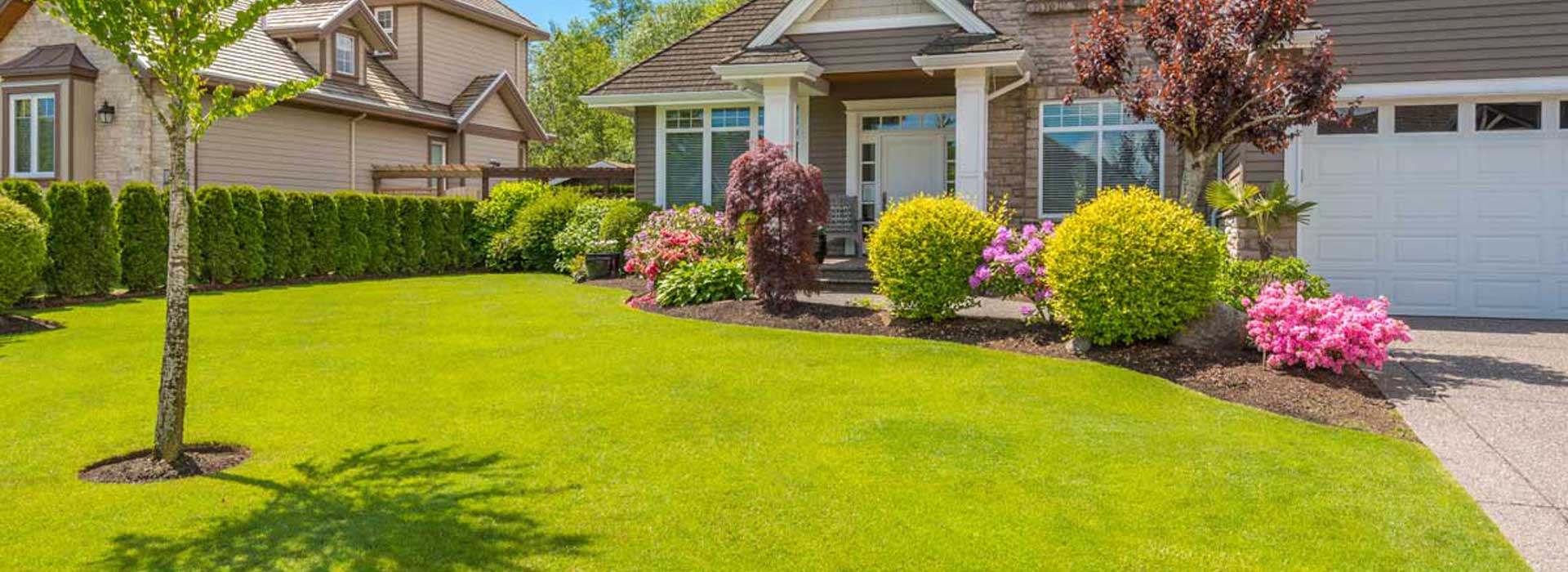Choosing the right plants for your landscape can be overwhelming—with thousands of species available, how do you know which ones will thrive in your climate, match your aesthetic, and require minimal maintenance?
Many homeowners make the mistake of picking plants based solely on appearance, only to find out later that they are unsuitable for their environment—leading to wasted time, effort, and money.
In this guide, we’ll cover:
- Key factors to consider when selecting plants
- The importance of growing zones and climate compatibility
- How to choose plants based on function and aesthetics
- Low-maintenance options for easy-care landscaping
By the end, you’ll have a clear roadmap for picking the perfect plants for your landscape.
1. Understanding Your Growing Zone
The first and most important step in plant selection is determining your USDA Plant Hardiness Zone. This tells you which plants can survive year-round in your area.
What Are USDA Hardiness Zones?
- The U.S. is divided into 13 zones, based on minimum winter temperatures.
- Each zone represents a 10°F difference in the coldest temperatures a plant can tolerate.
- A plant labeled “Hardy to Zone 5” means it can survive temperatures down to -20°F but not lower.
How to Find Your Zone: Visit the USDA Hardiness Zone Map and enter your zip code.
Example: How Zones Affect Plant Choice
- If you live in Zone 3 (cold climate, -40°F min) → Choose hardy evergreens, conifers, or perennials like peonies.
- If you live in Zone 9 (warm climate, 20°F min) → Opt for heat-tolerant plants like succulents, palms, or hibiscus.
Knowing your zone prevents plant failures and helps you invest in species that will thrive effortlessly.
2. Sunlight & Shade: Matching Plants to Light Conditions
Every plant has a specific sunlight requirement:
- Full Sun (6+ hours of direct sun daily)
Partial Sun/Partial Shade (3-6 hours of sun daily)
Full Shade (less than 3 hours of direct sun daily)
Example: Common Plants for Each Light Condition
- Full Sun Plants: Lavender, Roses, Coneflowers, Sunflowers
- Partial Shade Plants: Hydrangeas, Hostas, Ferns, Coral Bells
- Full Shade Plants: Bleeding Hearts, Hellebores, Japanese Forest Grass
Before selecting plants, observe your yard throughout the day to identify sunny and shady spots.
3. Soil Type & Drainage: What Works Best?
Plants have different soil preferences—choosing species suited to your soil type will increase their chances of thriving.
Common Soil Types & Best Plant Choices
| Soil Type | Description | Best Plants |
| Sandy Soil | Drains quickly, low in nutrients | Lavender, Succulents, Russian Sage |
| Clay Soil | Retains water, can be heavy | Dogwoods, Irises, Black-Eyed Susans |
| Loamy Soil | Best for most plants, retains moisture but drains well | Almost all plants thrive |
| Rocky Soil | Fast-draining, lacks nutrients | Sedums, Junipers, Agaves |
If your soil isn’t ideal, you can improve it by adding compost, mulch, or raised beds to create a better growing environment.
4. Choosing Plants Based on Function
Landscaping isn’t just about looks—plants also serve practical purposes. Think about your needs when choosing species:
Low-Maintenance Plants (For Busy Homeowners)
- Drought-tolerant options: Lavender, Yucca, Russian Sage
- Minimal pruning: Boxwood, Daylilies, Ornamental Grasses
- Disease-resistant plants: Coreopsis, Lantana, Coneflowers
Privacy Plants (For Screening & Noise Reduction)
- Tall hedges: Arborvitae, Leyland Cypress, Bamboo
- Dense shrubs: Holly, Privet, Wax Myrtle
Pollinator-Friendly Plants (For Bees & Butterflies)
- Nectar-rich flowers: Milkweed, Echinacea, Bee Balm
- Fragrant herbs: Thyme, Mint, Basil
Edible Plants (For Home Gardens)
- Fruit trees: Apples, Figs, Peaches
- Vegetables: Tomatoes, Peppers, Kale
- Herbs: Rosemary, Oregano, Parsley
Considering functionality ensures your landscape serves both aesthetic and practical needs.
5. Picking Plants Based on Aesthetic Appeal
Landscaping is about balance and harmony—mixing colors, textures, and plant heights creates a cohesive look.
Choosing the Right Colors
- Warm Colors (Red, Orange, Yellow): Create energy and attract attention
- Cool Colors (Blue, Purple, Green): Promote relaxation and tranquility
- Neutral Colors (White, Gray, Beige): Balance vibrant shades
Example: A cottage garden might include pink roses, purple lavender, and white daisies for a soft, romantic look.
Mixing Plant Heights for Depth & Structure
- Tall Plants (4ft+): Provide background structure (Ex: Hollyhocks, Sunflowers)
- Medium Plants (2-4ft): Add bulk and texture (Ex: Hydrangeas, Peonies)
- Low-Growing Plants (Under 2ft): Perfect for borders (Ex: Marigolds, Pansies)
Layering plants creates a dynamic, natural-looking design instead of a flat, one-dimensional space.
6. Seasonal Interest: Choosing Year-Round Plants
For a garden that looks great year-round, include plants that offer interest in all seasons:
Best Plants for Each Season
- Spring: Tulips, Daffodils, Cherry Blossoms
- Summer: Roses, Lilies, Coneflowers
- Fall: Maples (for foliage), Chrysanthemums, Sedum
- Winter: Evergreens, Holly, Winterberry
A well-planned garden ensures there’s something blooming in every season.
Conclusion: A Smart Approach to Plant Selection
Choosing the right plants for your landscape is about more than just looks—it’s about selecting species that are suited to your climate, soil, sunlight, and functional needs.
- Know your USDA Hardiness Zone
- Match plants to sunlight and shade conditions
- Select species based on soil type and drainage
- Choose plants for privacy, pollinators, or low-maintenance
- Create seasonal interest for year-round beauty
By following these principles, you’ll create a thriving, low-maintenance landscape that enhances your home’s beauty without constant upkeep.
Ready to design your perfect landscape?
Let Customscape.ai help you select the ideal plants for your space with AI-powered precision and ease!

